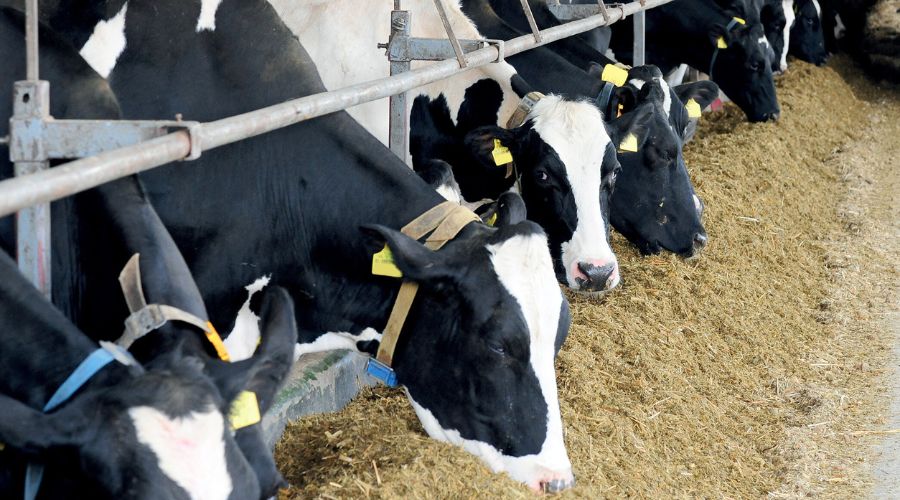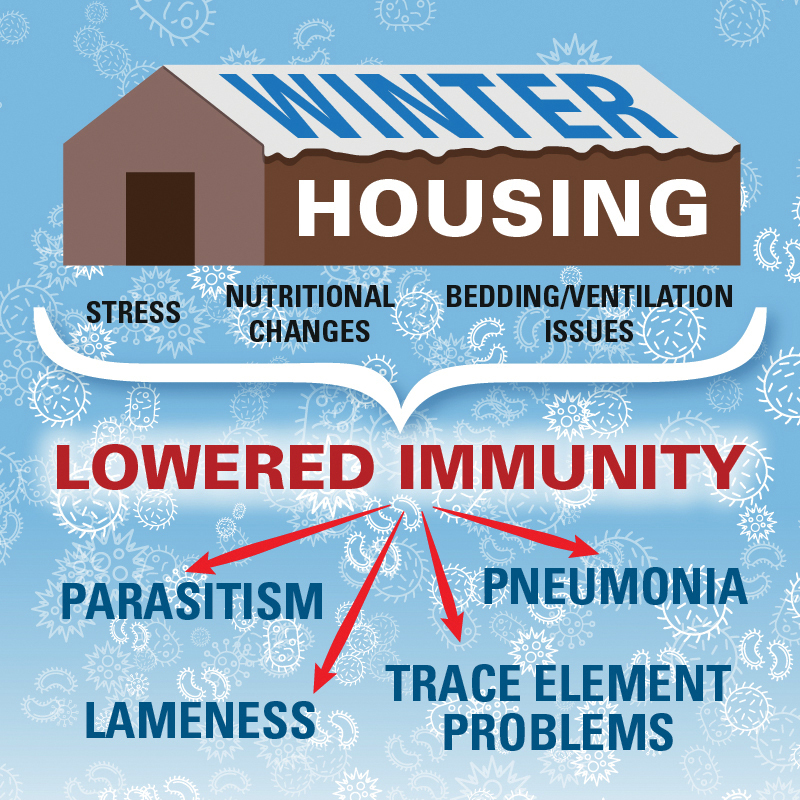Your guide to cattle health during winter housing
27th September 2024
Dr Tom Barragry, independent veterinary consultant for Provita Eurotech Ltd, offers advice on keeping cattle healthy during winter housing.

Winter housing can be an incredibly stressful time for cattle. Elevated cortisone levels in stressed animals can have numerous potential harmful effects on the animal’s immune system.
Stress factors at housing include moving to new housing, temperature changes, crowding, confinement, feed quality issues and other new environmental challenges.
The result is an increase in the spread of diseases, especially as cattle may be in a confined space which can hasten the spread of infections.
On many farms, winter housing will be the first time that groups of animals are mixed, so the chances of a disease outbreak increase. Amongst the major disease problems in housed cattle are pneumonia, trace element disorders and hoof problems.
Ventilation
Housing factors that lead to poor ventilation and stagnant air supply are often considered the primary reasons for high levels of pneumonia disease. Air space is just as crucial as floor area.
Pneumonia is particularly common in housed animals and the disease can often be avoided if buildings are not overcrowded, are well ventilated and well drained, and animals of different age groups are not mixed.
A continual flow of fresh air throughout a shed is important, but it is also necessary to keep draughts to a minimum to prevent cattle from getting respiratory infections.
Vaccination of calves and youngstock with pneumonia vaccines is a prerequisite, but vaccines can only reach their maximal effect if ventilation and air quality is optimum in the winter housing sheds.
Vaccinations may take anywhere from five days to six weeks to become fully effective (depending on product used), so it is important to plan the housing date with this in mind. It is also important to vaccinate every animal in the herd.
Provita Promist is a unique air purifier containing a blend of natural organic acids, essential oils and wetting agents which help control the levels of particulates and ammonia in the livestock housing.
It is effective against airborne bacteria, which improves air quality, reduces ammonia, dust and lowers environmental pH levels which reduces respiratory stress.
Trace elements
Traditionally, trace elements have been easily overlooked because most of the signs of a mild deficiency are manifested as a barely visible subclinical or low-level ill thrift, but trace elements perform a variety of vital roles including energy metabolism and immune response.
Trace element availability in both grass and forage is altered by lots of factors including soil type, pH, geology, drainage, plant type, weather and the process of silage making. Hence it varies from farm to farm and within different cuts of silage.
Winter silage is only as good as the soil and herbage that it was sourced from, and also the silage making technique. Thus, there are variables here which can affect trace element levels.
A 2018 analysis of 320 grass silage samples in the UK showed high levels of potassium and low levels of copper, zinc, iodine and selenium.
Low copper (or high molybdenum) is commonly associated with ovarian inactivity, poor conception, embryonic death, and delayed puberty. Low iodine can be responsible for still births, abortion, and weak calves. Low zinc is associated with lameness, mastitis, and disease susceptibility.
Low selenium with retained placenta, metritis, extended calvings, depressed immune function and poor conception rates. Hence regular supplementation whilst on silage may be necessary.
ProVitaMin Cattle is a highly concentrated complex mineral and vitamin drench that can be used for adult cattle and young calves. It comprises 26 broad spectrum elements, supplying chelated minerals, vitamins and nutrients to swiftly elevate levels to boost performance and fertility.
ProVitaMin is an easy-to-use solution with supplementary rates as low as 1mL per 10kg for calves up to a maximum of 50mL for adult cattle. ProVitaMin Cattle and ProVitaMin ColSelB12 are available in 5, 2.5 and 1 litre packs.

Lameness
Lameness usually shows a steep increase in incidence over the winter period. Hard concrete floors, slats, wetness, lying areas, and slurry underfoot can all predispose to hoof problems.
Hoof health problems are serious issues in cattle that can cause tremendous economic losses. Factors such as overcrowding, flooring type, nutrition and trace element status all play a role here.
Lameness is one of the three main challenges facing dairy farmers all year, but at housing the risk is heightened. Reported lameness prevalence has been higher in housed systems and lower in pasture-based systems because pasture provides an optimal walking surface for improved mobility.
Published reports have shown that cows housed on concrete were five times more likely to be diagnosed as lame as those housed on rubber mats over concrete. Lameness is a costly gateway disease which makes cows more likely to suffer from mastitis, milk fever, reduced milk yield and infertility.
A regular foot bathing protocol with a proven non-toxic foot bath is an effective way to tackle foot disorders, especially digital dermatitis which can result from lack of underfoot hygiene, bacterial infection, and failure to remove slurry.
Hoofsure Endurance is highly concentrated and is used at 1% for maintenance and 2% for higher challenge times.
With 500 cow passes per 200-litre footbath and up to 5,000 cows per 20 litres, it is a cost-effective as well as safe, non-toxic and scientifically proven – up to 44% more effective than copper sulphate and formaldehyde.
To contact your local farm representative, freephone 0800 328 4982 or info@provita.co.uk.
Read more livestock news.
